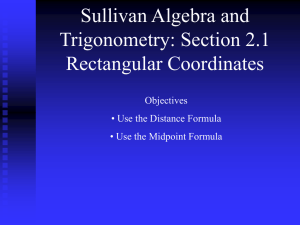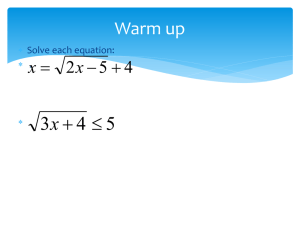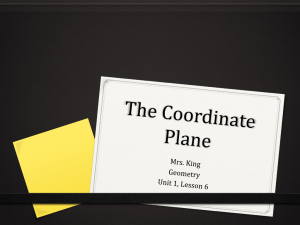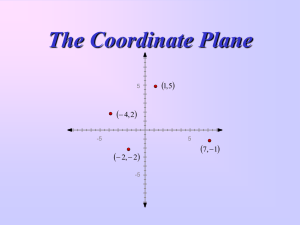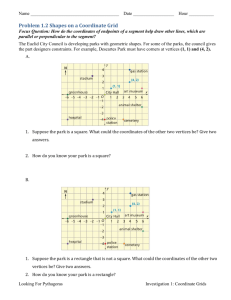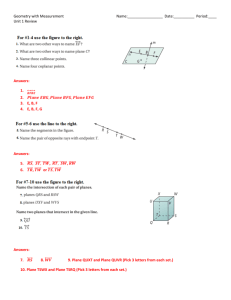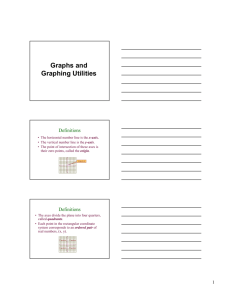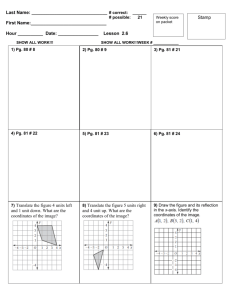Geometry Fall 2011 Lesson 17 (S.A.S. Postulate)
advertisement
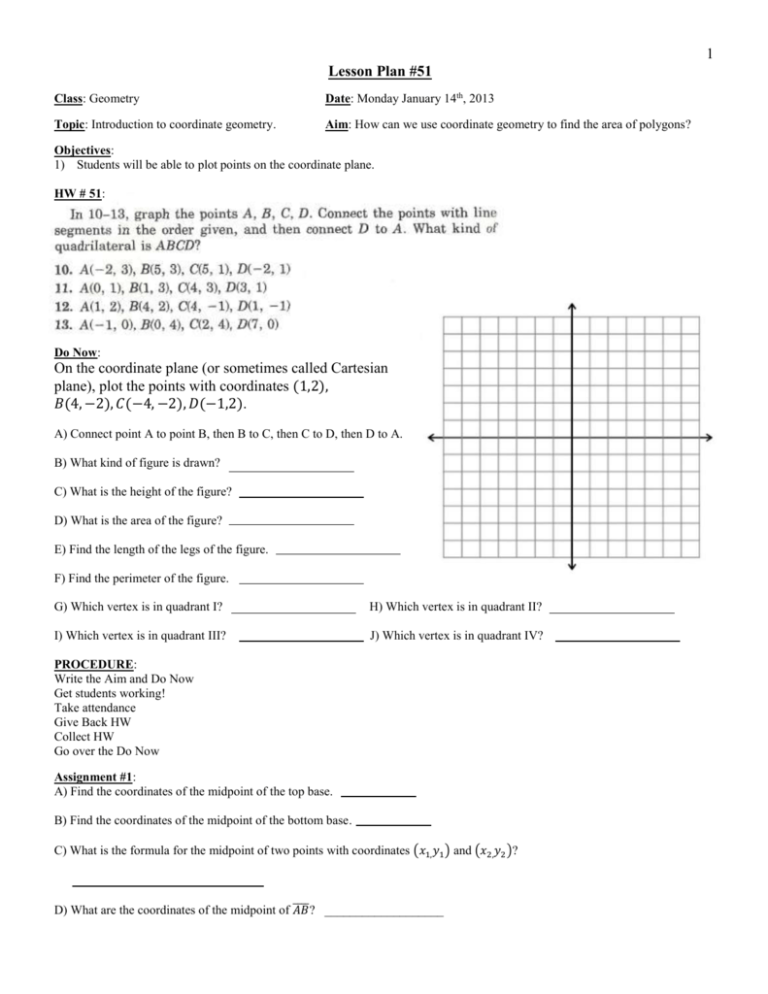
1 Lesson Plan #51 Class: Geometry Date: Monday January 14th, 2013 Topic: Introduction to coordinate geometry. Aim: How can we use coordinate geometry to find the area of polygons? Objectives: 1) Students will be able to plot points on the coordinate plane. HW # 51: Do Now: On the coordinate plane (or sometimes called Cartesian plane), plot the points with coordinates (1,2), 𝐵(4, −2), 𝐶(−4, −2), 𝐷(−1,2). A) Connect point A to point B, then B to C, then C to D, then D to A. B) What kind of figure is drawn? C) What is the height of the figure? D) What is the area of the figure? E) Find the length of the legs of the figure. F) Find the perimeter of the figure. G) Which vertex is in quadrant I? H) Which vertex is in quadrant II? I) Which vertex is in quadrant III? J) Which vertex is in quadrant IV? PROCEDURE: Write the Aim and Do Now Get students working! Take attendance Give Back HW Collect HW Go over the Do Now Assignment #1: A) Find the coordinates of the midpoint of the top base. B) Find the coordinates of the midpoint of the bottom base. C) What is the formula for the midpoint of two points with coordinates (𝑥1, 𝑦1 ) and (𝑥2, 𝑦2 )? D) What are the coordinates of the midpoint of ̅̅̅̅ 𝐴𝐵 ? ___________________ 2 Assignment #2: Let’s develop a formula to find the distance between points with coordinates (𝑥1, 𝑦1 ) and (𝑥2, 𝑦2 )? Assignment #3: Find the distance between the points (4,2) and (−2,10). Assignment #4: Find the length of the line segment joining the points whose coordinates are (0,5) and (−3,3) Assignment #5: Find the lengths of the sides of a triangle whose vertices are A(−4,2), 𝐵(−1,6), 𝐶 (5,4). Assignment #6: Show that the triangle with the vertices 𝐴(1,0), 𝐵(5,0), 𝑎𝑛𝑑 𝐶(3,4) is isosceles: Assignment #7: The point (2,4), is on the circle whose center is (6,1). Find the length of the radius of the circle. 3 Sample Test Questions: 1) 2) 3) 4) 5) 6) 7) 8) 4 Exercise #1: Find the length of the shortest side of a triangle whose vertices are 𝑅(−2, −1), 𝑆(1,3), 𝑎𝑛𝑑 𝑇(1,10) Exercise #2: Exercise #3: Exercise #4: Exercise #5:

